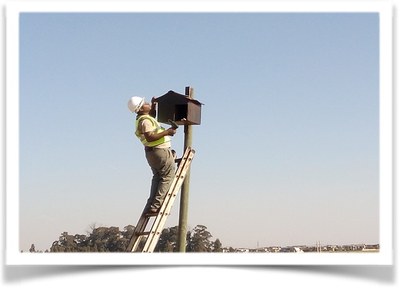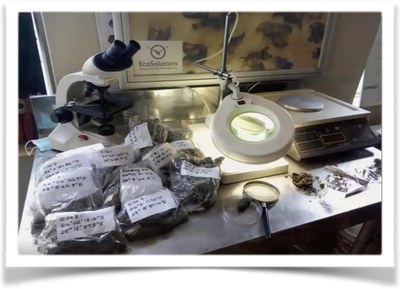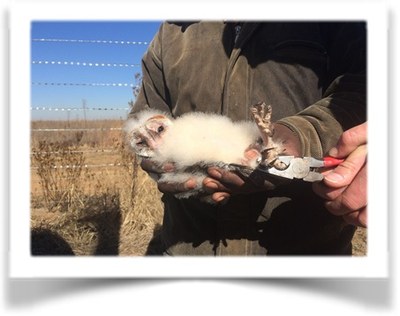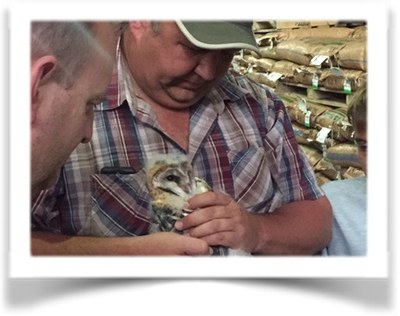 The implementation of a rodent control program through the erection of owl boxes is a relatively simple undertaking. EcoSolutions always recommend placing owl boxes at farm villages and schools as these are always areas where rodent numbers are high.
The implementation of a rodent control program through the erection of owl boxes is a relatively simple undertaking. EcoSolutions always recommend placing owl boxes at farm villages and schools as these are always areas where rodent numbers are high. When erecting boxes it is important to work on a minimum height of 3 meters - this will prevent predators from gaining access to the box. In addition, the boxes should be placed on the edge of fields, or at a point where a mosaic of different habitats occur. Barns and old abandoned buildings are excellent places for barn owl boxes. The placement of boxes quite close to a farm road or track is ideal; this allows for easy access when checking, cleaning and also where the ringing of young owlets is undertaken.
When erecting boxes it is important to work on a minimum height of 3 meters - this will prevent predators from gaining access to the box. In addition, the boxes should be placed on the edge of fields, or at a point where a mosaic of different habitats occur. Barns and old abandoned buildings are excellent places for barn owl boxes. The placement of boxes quite close to a farm road or track is ideal; this allows for easy access when checking, cleaning and also where the ringing of young owlets is undertaken. It needs to be remembered that Barn Owls will never completely eradicate rodents within farmlands, but a well implemented Barn Owl project can reduce rodent damage to manageable levels in a sustainable and responsible manner. A well managed owl project can respond to rodent eruptions, provide information on rodent diversity and exert significant pressure on rodent species currently impacting crop yield.
It needs to be remembered that Barn Owls will never completely eradicate rodents within farmlands, but a well implemented Barn Owl project can reduce rodent damage to manageable levels in a sustainable and responsible manner. A well managed owl project can respond to rodent eruptions, provide information on rodent diversity and exert significant pressure on rodent species currently impacting crop yield.



